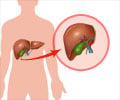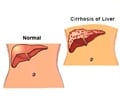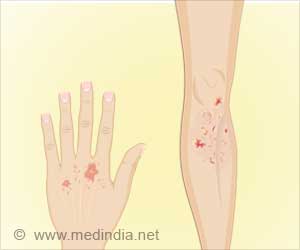Scientists have linked the onset of biliary atresia in infants to an overactive response by one of the immune system's key weapons against infection, natural killer, or NK, cells.
Scientists have linked the onset of biliary atresia in infants to an overactive response by one of the immune system's key weapons against infection, natural killer, or NK, cells.
Natural killer is a disease where blocked bile ducts can cause severe liver damage and death.Researchers at Cincinnati Children's Hospital Medical Center also report that blocking a gene that helps NK cells attack bile duct tissues lessens damage and may be a way to treat the most common cause of chronically progressive liver disease in children. The study, to be published in the Aug. 3 Journal of Clinical Investigation, is posted online on the journal's website.
"Our findings underscore the developing immune system's role in causing injury to bile ducts soon after birth, and they have implications for developing new therapies to block the disease by targeting certain cells or pro-inflammatory circuits," said Jorge A. Bezerra, M.D., the study's senior investigator and research director of the Division of Gastroenterology, Hepatology and Nutrition at Cincinnati Children's.
"The next steps for translating these findings into clinical application would include pre-clinical trials of biologics to halt disease progression by blocking the Nkg2d receptor and depleting NK cells at the time biliary atresia is diagnosed," he added.
Very little is known about the cause of biliary atresia, although it has been traced to the immune system responding to an infection in the liver and bile ducts. Surface tissues inside the bile ducts are damaged, which in turn allows inflammatory cells to block the duct and the ongoing accumulation of fibrotic tissue. Biliary atresia affects about one in every 15,000 babies.
The current frontline treatment is surgery to remove and replace obstructed bile ducts with sections of the child's intestine. Without surgery, bile cannot enter the intestines to aid digestion, and instead backs up into and damages the liver. Corrective surgery is successful 65 to 85 percent of the time and is not considered a cure, although it can allow babies to have several years of fairly good health. In more severe cases, children may require a liver transplant.
Advertisement
In the mouse experiments, the scientists used a rotavirus infection to induce biliary atresia in newborn mice. Similar to what was observed in diseased human infant livers, the researchers found that active NK cells were the most abundant cells populating the mouse livers and bile ducts at the time of obstruction. Furthermore, they discovered that NK cells rely on the receptor gene, Nkg2d, to make contact with and attack bile duct surface cells by attaching to the Nk2d protein, which resides on the membranes of bile duct cells. Once that contact is established, NK cells break down the membranes of bile duct surface cells, leading to tissue damage.
Advertisement
Source-Eurekalert
ARU













